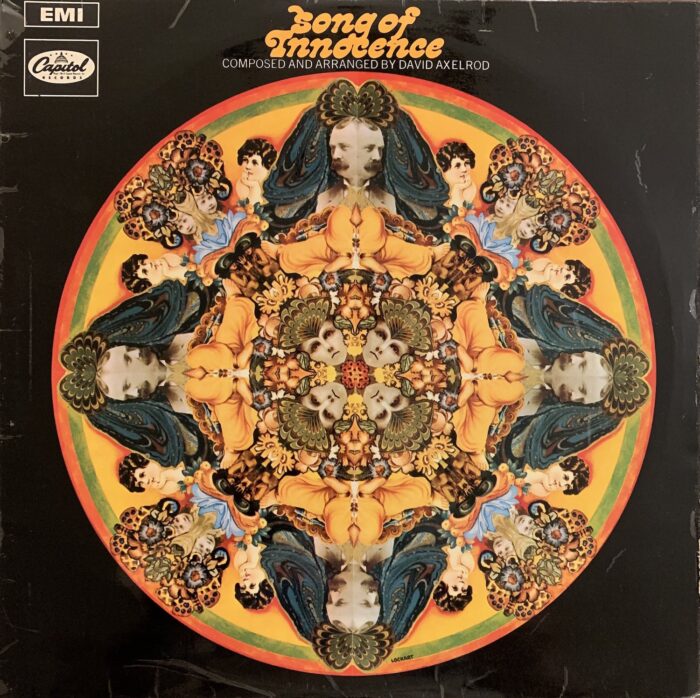
It seems fitting that our 50th post should cover a landmark album: Song of Innocence (1968) by David Axelrod – as in the producer of Cannonball Adderley’s The Black Messiah (1971), not the political strategist behind two Barack Obama victories and zero Ed Miliband ones.
When we think of “fusion” we tend to imagine a hybrid of jazz and rock (or wasabi guacamole), but for Axelrod this only paints half the picture. Critic Elliot Teagle coined the term “jazz fusion” to describe Song of Innocence – blending popular music with classical, film scores and the “Third Stream” experiments of Gunther Schuller, who heralded in 1961 “a new genre of music located about halfway between jazz and classical music.”
By the mid-1960s pop was undergoing its own revolution, as producers began expanding their role in the increasingly experimental construction of music. Studio visionaries like Brian Wilson (Love & Mercy is currently on iPlayer) and Phil Spector required the finest musicians to realise their ambitions, enlisting a collective of LA-based session players now known as the Wrecking Crew. As Spector’s house band they formed the backbone of his highly influential “Wall of Sound”, a layered production technique he called “a Wagnerian approach to rock and roll.”
This musical climate inspired Axelrod to hire the Wrecking Crew for Song of Innocence, which he later described as “Wagner with a backbeat.” A tone poem based on William Blake’s illustrated poetry collection Songs of Innocence and of Experience (Axelrod made Songs of Experience the following year), the album sees some 37 musicians fleshing out the Wrecking Crew rhythm section. The sound they create constitutes perhaps the 27 most influential minutes of music ever recorded, at least for a generation of hip-hop crate-diggers who rediscovered the album in the 1990s.
Axelrod’s soaring psychedelic charts still sound unlike anything else, creating its own world with its own set of physical laws – a world where funky breakbeats and bass lines co-exist with sweeping strings, baroque organs and fuzzed-out guitar solos. This sense of musical world-building was an enormous influence on DJ Shadow, who said of his friend: “He urged LA’s finest session players to create a melancholic world which felt like my world, and reflected the dread and disappointment society inevitably inspires in its emotionally vulnerable.”
That darkness is echoed by Cannonball Adderley’s description of his producer’s sound: “No matter how pretty his music is, there’s always a layer of violence in it.” Axelrod was a boxer before entering the music industry (interestingly Miles Davis was a huge boxing fan too) and that violence underscores every gorgeous note, from the opening strains of ‘Urizen’ (the track sampled by Jurassic 5’s ‘A Day at the Races’) to the Ennio Morricone-inspired closer ‘The Mental Traveler’ (Eminem’s ‘Any Man’).
‘Holy Thursday’ (INI and Pete Rock’s ‘Think Twice’) is the most famous track and the clearest display of Axelrod’s forward-thinkingness, its groove so unmistakably hip-hop that you wonder whether his engineering prowess extended to the creation of a time machine – though it was also sampled as early as 1971 by Japanese psych rock band People, bookending their album Ceremony: Buddha Meet Rock. The song sees Carol Kaye’s bass, Earl Palmer’s drums and Don Randi’s piano dancing against a rich backdrop of swelling strings and heavenly horns, music reimagined as boundless experience.
A singular synthesis of pop, jazz and classical music, Song of Innocence is the missing link between Pet Sounds (1966) and Bitches Brew (1970) – and thanks to sampling, between William Blake and Macy Gray.
For more boundary-breaking jazz gems, head on over to our ‘Fusion Intrusion’ playlist on Spotify.
If you enjoyed this post and want to stay updated, make sure to subscribe to our Spotify playlist and follow us on Instagram and Twitter!
